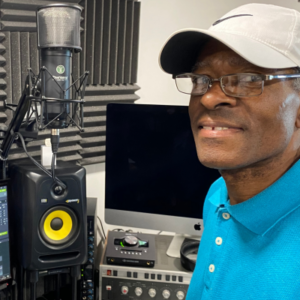First uploaded 26 July 2020
The third feature film starring Diana Ross was released in 1978. It is a reworking of L. Frank Baum’s story “The Wonderful Wizard of Oz”, with an all-black cast, loosely based on the Broadway musical version of 1974. It was produced by Rob Cohen for Motown Productions and directed by Sidney Lumet, with the main parts played by Diana Ross, Michael Jackson, Nipsey Russell and Ted Ross. Joel Schumacher worked on the script and Quincy Jones was in charge of the music. Charlie Smalls and Luther Vandross’ songs were adapted and a number of new songs were added, written by Jones and the song-writing team of Nickolas Ashford & Valerie Simpson.
Gordy originally wanted Stephanie Mills, who had originated the role on Broadway, to be cast as Dorothy, because he thought that Ross was too old for the role at thirty-three years of age. Diana Ross managed to persuade the producer Rob Cohen to support her and Gordy gave in!
“The Wiz” was filmed in New York, at the Astoria Studios, with various scenes set in the New York State Pavilion from the 1964 New York World’s Fair and in Coney Island. The World Trade Centre served as the Emerald City, where the filming involved 650 dancers, 385 crew members and 1,200 costumes.
Unfortunately, the film was not a success, producing an estimated $10.4 million loss for Motown and Universal. One small silver lining for lovers of Michael Jackson’s music was that Quincy Jones discussed future music projects with Jackson and agreed to work with him. The three albums that emerged as a result of this discussion were “Off the Wall”, “Thriller” and “Bad”.
So let us concentrate on the music from “The Wiz”. As happened for the previous Ross films, a soundtrack album was released, appearing on 21st September 1978. The soundtrack is a mixture of instrumentals and vocal recordings and features “Ease on Down the Road”, recorded by Diana Ross and Michael Jackson. The track was nominated for a Grammy Award in the category of “Best R&B Performance by a Duo or Group with Vocal” in 1979. This was first time that Quincy Jones had produced Ross and Jackson together. Music critic William Ruhlmann at Allmusic, describing the duet between Jackson and Ross, writes of its “spectacular vocal firepower”. In his opinion it outperforms the 1975 version by Consumer Rapport.
The soundtrack album was the first such album of Miss Ross’ career to be awarded gold certification by the RIAA on 29th September 1978. In Paul Milliken’s analysis of the album, he writes that “the talent on display on The Wiz soundtrack is pretty incredible. The original Broadway score by Charlie Smalls is here adapted and arranged by genius producer Quincy Jones, and features some new music written by Nickolas Ashford and Valerie Simpson. Aside from Diana Ross, voices featured on the double-LP include Michael Jackson (playing the Scarecrow), Lena Horne (as the good witch), Tony Award winner Ted Ross and a background choir including Luther Vandross, Cissy Houston, and Patti Austin”.
Under Quincy Jones’ creative direction, Diana Ross’ voice clearly shows superb power and strength. He brings out the best in Ross and manages to enrich her voice with great arrangements and outstanding instrumentation on the double-LP, which has twenty six listed tracks comprised of multi-instrumentals and a variety of different voices featured. I will analyse here only the tracks that feature Diana Ross, a total of ten tracks. Several ballads are featured, covering a range of emotions. The first ballad featured on the soundtrack is “Can I Go On?”. It has a Gospel feel that is well-captured by Quincy Jones. The track was co-written by Jones and husband and wife team Ashford and Simpson. The song starts with a group of voices in a church setting and changes gear when Diana Ross begins her solo, which sounds like a Michael Masser music production. In this performance she sings in a low register with great control. Her delivery is smooth and sophisticated, with a deep feeling of loneliness expressed in her voice. The orchestration produced by Jones is an authentic fusion of classical and jazz with a loud final crescendo.
The track entitled “Home” explores the feelings of the character Dorothy, played by Ross. Paul Milliken believes that “…this is more of an acting performance from Miss Ross, though it’s a great example of the beautifully-rendered score by Mr. Jones; the instrumental features his trademark crispness and it perfectly complements the vocal work”. She starts out in a low register but as the track progresses her voice becomes more energetic and commands with full richness and control, with no vocal support. The orchestration is out of this world, the best that Jones can deliver, that climaxes in new vocal heights for Diana Ross. The song is certainly a classic. Stephanie Mills performed a brilliant interpretation of “Home” on her platinum-certified album “Home”, which was released in 1989 by the now-defunct label MCA. The song achieved the number one position on the Billboard Hot Black Singles Chart week-ending 25th November 1989 (1 week). The Mills track featured the best session musicians operating out of Philadelphia during the 1980s and 1990s, such as Jim Salamone on drums, percussion, emulator and synthesizer, Douglas Grigsby on bass, Randy Bowland, with string and horn arrangements by The Brothers Kerber. The track was produced by Nick Martinelli who would later produced Diana Ross’ gold-certified Christmas album “A Very Special Season” (1994), which sold over 100,000 copies according to the BPI.
The next powerful ballad was “Be a Lion” performed by Diana Ross and Ted Ross. Before Ted Ross starts to sing, Diana Ross delivers an excellent vocal solo. Her voice glides along with an ease and assuredness that is supported by Quincy Jones’ lovely orchestration. Ross holds each note for over 30 seconds while her voice soars with great authority and control. It is sad that this song was not released as a single from the soundtrack. I believe it is one of the strongest tracks on the album and should be featured in her live performances and on one of her compilation albums. It is definitely one of her great ballads, which demonstrates very clearly that she has developed into a brilliant vocalist through the school of hard knocks. She takes on all the vocal challenges presented to her on each project and has developed excellent music intelligence, as she has grown as an artist.
“Everybody Rejoice” is a powerful up-tempo dance R&B/Classic/jazz mix track written by the late Luther Vandross. The strings section and rhythm section remind me of Ashford and Simpson’s music production, with a dynamic gospel-flavoured feel to the song. Jones helps Ross to push her voice impressively above the rest of the powerful choir, which included Luther Vandross, Cissy Houston (the mother of the late Whitney Houston) and Patti Austin, who became a successful solo artist on Quincy Jones’ record label Qwest Records, where she recorded a big hit album entitled “Every Home Should Have One”, featuring the gold-certified single “Baby Come To Me” in 1981.
“Ease on Down the Road” is another up-tempo track. As we have noted above, it features Diana Ross performing a duet with the late Michael Jackson. The song is a soulful celebration with a powerful upbeat funky rhythm, a forerunner of the dance tracks on Michael Jackson’s “Off The Wall” album, released the following year. The track contains elements of Quincy Jones’ recordings with the Brothers Johnson or of Michael Jackson in the late 1970s. The song features Jerry Hey’s outstanding horn arrangements, which were a musical trade mark in many of Quincy Jones’ music productions, and a significant contribution from Steve Gadd, a regular drummer on many recording sessions for Jones over the years.
Diana Ross’ performance on the soundtrack was indeed stellar and her interpretation of the character of Dorothy in “The Wiz (Original Soundtrack)” clearly shows that she fully committed herself to the character, with strong emotions in her voice.
The list of credits on the album is incredible. Some of the most talented artists, arrangers, musicians and sound engineers were featured on the soundtrack recording.
The failure of the film to generate any profit persuaded Berry Gordy to concentrate on television for the next few years. Diana Ross was still involved in some of the productions, but her big-screen career was over.














